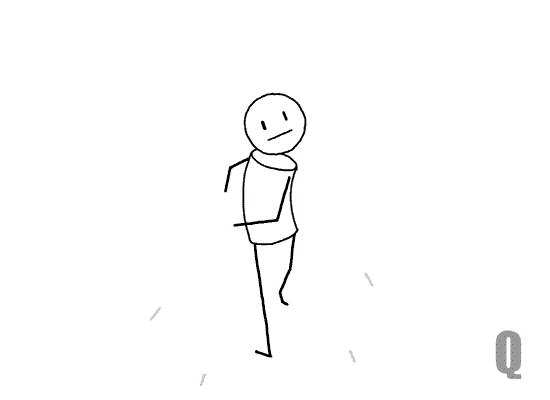An important aspect of animation is the connection of characters to the audience. Reason being, is that people will follow the character(s) for years to come as long as they feel invested to their characters. In animation, there are nine ways to build emotions of the audience.
 1. Rear View-
1. Rear View- This is when the camera is set behind the characters as we watch them look on into the distance. This image is often a scene of love where the characters are dreaming of their future together or enjoying their company.
 2. Shadows-
2. Shadows- Shadows typically add suspense or drama to an animation. You will often find shadows used during times or sneaking around or secrecy. Using shadows are much easier to animation and may be use to take up space in the scene.
 3. Shadows Over the Character-
3. Shadows Over the Character- Shadows over the character often add a scene suspense and stress as if a character is being haunted or followed. In the case of the above picture, Peter Pan's shadow plays a large role in the movie that wouldn't actually follow him. His shadow was like it's on character, but without the complication of facial details and clothing.
 4. Overlays-
4. Overlays- Overlays in animation do a couple of things. Overlays can distract the audience from the main character so that the creator does not have to detail as much of the character as he would if the character was in an open space. Overlays also make the scene look more complex when in reality it is just multiply layers of different things on top of each other
. 5. Dramatic Layout-
5. Dramatic Layout- A dramatic layout plays to the characters emotions. In the image above, the water adds excitement to the scene to play off of Ariel's expression.
 6. Pictorial Shots-
6. Pictorial Shots- In this scene, it shows Anna is focused upstairs however we cannot see her expression. Yet, the audience can tell the character is apprehensive to take steps up the stairs as she is bundles and standing flat footed.
 7. Effects Animation-
7. Effects Animation- Effect in animation add to the scene to help describe the mood or feeling happening. The sparks falling from the sky compare to the rainfall which is the washing away and "cleansing" of the ground to a fresh or new day. In this scene, the beast is transforming to a man, which is better understood through the sparks showing that change is happening.
 8. Held Drawing with Camera Moves-
8. Held Drawing with Camera Moves- Held drawing is something that animators use because it is simpler than moving the entirety of a character. Held drawing often zooms in on a certain aspect of a character to show a change of scene. Animators may zoom into the kiss to show intimacy in the scene.
 9. Animation Sounds-
9. Animation Sounds- Animator's will often show a scene, but will have sounds playing. In doing this, they eliminate the work of animating, but are able to convey their message to the audience simply through sounds. Even though they cannot see what's happening, they know through what they hear.
Now, there are five things to remember when animating emotions.
1. Make sure the emotional state of the character is clearly defined.
2. The thought prices reveals the feeling. So at times it can be shown with a single, held drawing, or a simple move. Other times there should be gestures, body moves, or full action. Determine which is best in each case.
3. Be alert to use cutting and camera in helping accentuate the emotion.
4. Ask yourself constantly...What am I trying to say here? What do I really want to show? How do I want the audience to react?
5. Use the element of time wisely; to establish the emotion of the character, to convey to the viewers, to let them savior the situation. Don't be ponderous, but don't take it away from them just as they start to enjoy it.
 Lets rewind to four months go...sometime in January. I didn't know the first thing about animation. Granted I'm no expert, but I have learned a few things over the past couple of months! During a little trial and error in creating animation my self, I truly believe the most important phenomenon in animation is squash and stretch. Squash and stretch is a principle used in animation to make an object or character's movements appear real. In reality, our bodies remain at one length all times, however in certain situations our bodies must compress or extend to their possible limits. For example, if a body bends down, in animation this would be considered "squashing". Squashing would also be when a ball drops to the ground and compresses as gravity pulls the ball to the earth. "Stretching" for our bodies is exactly what is sounds like. If you were to take a large leap to jump from point A to point B, your body would be in it's full extension to do so. As for the ball, it would be bouncing up toward the sky in its maximum stretching capacity. If you wanted to recreate this look in animation, squash and stretch is absolutely necessary to complete that task. When Walt Disney and his crew were sifting through good and bad animators, the first test was to see if they could animated a bouncing ball, so this principle has been a vital rule in animation for years. Squash and stretch is without a doubt the most important phenomenon/ principle in the creation of any animation.
Lets rewind to four months go...sometime in January. I didn't know the first thing about animation. Granted I'm no expert, but I have learned a few things over the past couple of months! During a little trial and error in creating animation my self, I truly believe the most important phenomenon in animation is squash and stretch. Squash and stretch is a principle used in animation to make an object or character's movements appear real. In reality, our bodies remain at one length all times, however in certain situations our bodies must compress or extend to their possible limits. For example, if a body bends down, in animation this would be considered "squashing". Squashing would also be when a ball drops to the ground and compresses as gravity pulls the ball to the earth. "Stretching" for our bodies is exactly what is sounds like. If you were to take a large leap to jump from point A to point B, your body would be in it's full extension to do so. As for the ball, it would be bouncing up toward the sky in its maximum stretching capacity. If you wanted to recreate this look in animation, squash and stretch is absolutely necessary to complete that task. When Walt Disney and his crew were sifting through good and bad animators, the first test was to see if they could animated a bouncing ball, so this principle has been a vital rule in animation for years. Squash and stretch is without a doubt the most important phenomenon/ principle in the creation of any animation.


















